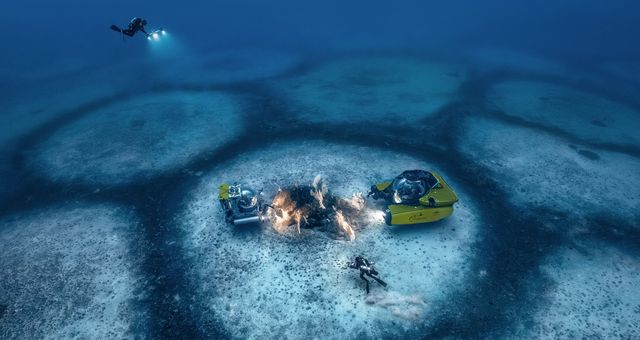The growing awareness of the vulnerability of aquatic food products is reflected in strategic frameworks and roadmaps, such as the 2022-2031 Strategic Framework and the Blue Transformation Roadmap, which aim to support the development of robust, resilient, and sustainable aquatic food systems. These efforts contribute significantly to global food security and poverty reduction.
Historical Evolution of Aquatic Food Products within the UNFCCC Framework
In recent years, policies have increasingly focused on the nexus between climate change, aquatic ecosystems, and food production, following pivotal consultations within the UNFCCC. The journey began in 2009 with the launch of World Oceans Day during the 15th session of the Conference of the Parties (COP15). By 2016, World Oceans Day was incorporated into the « Blue Zone » at COP22. The first Ocean and Climate Dialogue, mandated by COP25, took place in 2020, emphasizing the crucial role of ocean-climate action based on the Special Report on the Ocean and Cryosphere in a Changing Climate by the Intergovernmental Panel on Climate Change (IPCC) published in 2019.
The outcomes of this initial Dialogue were presented at COP26 in 2021, leading to a historic decision to hold an annual ocean dialogue during sessions of the UNFCCC’s Subsidiary Body for Scientific and Technological Advice (SBSTA) and to include ocean-related themes in the UNFCCC’s multilateral process. The 2022 edition of the Dialogue made further progress by stressing the need to strengthen national ocean-climate actions and synergies between ocean and climate policies, which resulted in the inclusion of an ocean section in the Sharm El Sheikh Implementation Plan of COP27.
For the 2023 edition of the Dialogue, one of the two key themes for in-depth discussions was « fisheries and food security, » acknowledging the potential of aquatic food products to provide essential climate solutions while enhancing food security. The dialogue emphasized the need to integrate climate solutions related to aquatic foods into national and multilateral climate processes, with a special focus on empowering vulnerable small-scale fishers and aquaculturists to adapt to climate change.
The public call for contributions for this edition led to the submission of over a hundred case studies, highlighting the vital importance of aquatic food products in developing climate adaptation and mitigation solutions. These examples also contributed valuable insights to the global stocktake, which aims to assess and accelerate collective progress towards achieving the Paris Agreement goals, thereby informing the preparation, updating, and implementation of Nationally Determined Contributions (NDCs) and national adaptation plans.
Elevating the Status of Aquatic Food Products at COP28
These efforts have significantly elevated the status of aquatic food products in decisions made at COP28. Resilient food systems and the management of continental, marine, and coastal ecosystems were presented as valid climate solutions. Additionally, over 150 countries adopted a political declaration on sustainable agriculture, resilient food systems, and climate action, highlighting the promotion of sustainable aquatic food products.
Developing Best Practices from the Field
The first global stocktake emphasized the urgent need to scale up adaptation measures to mitigate and manage the increasingly severe effects of climate change, climate variability, and weather-related disasters, particularly on those least equipped to cope with and overcome them. The 2023 Ocean Dialogue provided an opportunity to showcase FAO projects and programs implementing climate adaptation solutions for aquatic food systems across regions.
Box 47: Prevention, Preparation, and Recovery of Aquatic Food Systems After Climate-Related Shocks or Disasters
Intense climate-related disasters—floods, storms, tropical cyclones, droughts, and heatwaves—are becoming more frequent globally and have significant socioeconomic impacts. Risk factors for disasters include climate change, poverty and inequality, population growth, health emergencies like pandemics, unsustainable practices (including land use and management), armed conflicts, and environmental degradation. Intense climate-related disasters now account for over 80% of all disasters. In the past 50 years, such disasters have resulted in 2 million deaths, with a shocking 90% occurring in developing countries.
Not all extreme events trigger a disaster, and the extent of their impact on the fisheries and aquaculture sector depends on the exposure and vulnerability of aquatic food systems and their ability to cope. Poverty, access to resources, and governance structures are crucial factors influencing disaster risks and impacts. Disasters can damage boats, engines, fishing gear, landing sites, post-harvest facilities, and aquatic habitats. They can also disrupt livelihoods, alter food value chains, reduce product availability, and cause a loss of export revenues.
Fortunately, compared to other sectors, rapid recovery in fishing and aquaculture after a disaster can, in some cases, ensure a supply of nutritious food and create jobs quickly, helping local communities return to normal economic activity faster. Although FAO interventions have primarily focused on disaster response, the organization is gradually adopting a more proactive approach. For example, in recent years, the FAO has facilitated the recovery of fishing activities in the Bahamas (after Hurricane Dorian in 2019), Tonga (after a volcanic eruption and subsequent tsunami in 2022), and South Sudan (annually after floods), providing fishermen with fishing gear, processing equipment, and tools for engine repair. The FAO has also developed guidelines for emergency interventions in the fishing and aquaculture sector. Training has been provided to seven small island developing states in the Caribbean, with plans for further training in Africa, Asia, and Latin America. This approach enables more comprehensive assessments and faster interventions to restore the entire aquatic value chain. However, data needed to assess the impact of disasters on fisheries and aquaculture remain incomplete and inconsistent, complicating the evaluation of losses and damages and often excluding the sector from evaluations and funding for interventions and recovery. Therefore, it is crucial to continue improving data collection tools and systems and to implement the FAO’s loss and damage assessment tool.
Proactive interventions must be designed and implemented in a timely manner, anticipating, preventing, and reducing future risks. Urgently integrating multi-hazard disaster risk reduction strategies into fisheries legislation, developing policies and programs aligned with global disaster risk reduction and management frameworks, and including resilience-building measures such as infrastructure development, maritime safety, comprehensive fishing and vessel registries, and early warning systems with responsive social protection are essential. These strategies should encompass national and local disaster risk preparation and response plans and incorporate the « building back better » principle for the fisheries and aquaculture sectors in Grenada and Saint Vincent and the Grenadines.
Source: Open Knowledge




